This area was once a huge Iron Age settlement known as Verlamion, used by tribal kings as a main hub between smaller groups around 25 BC - 5 BC.
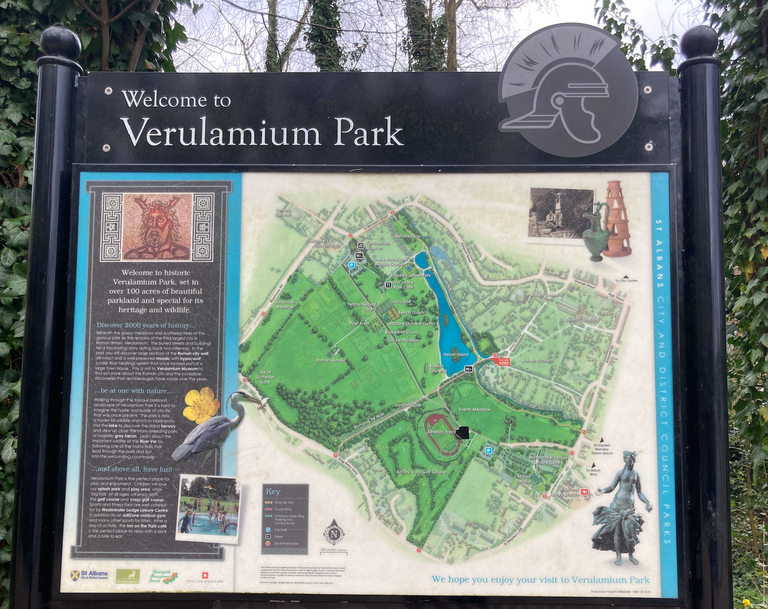
A view over the park is seen below, from the north eastern corner looking southwest.
To give a sense of importance of the city- it was just a moderately sized settlement near the River Ver to the west of this location. It was relocated, improved and slowly got bigger, covering an area of about 125 acres of land by the early 3rd century. The park seen today is a bit smaller at 100 acres with modern day homes now standing on the perimeter.
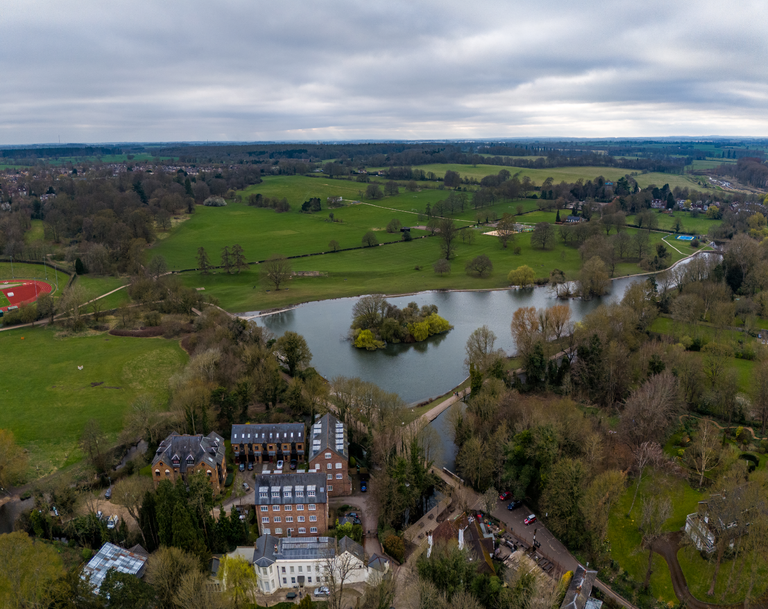
This second image is a reverse of the one above, taken in the middle of the park looking northeast towards the Abbey and city centre.
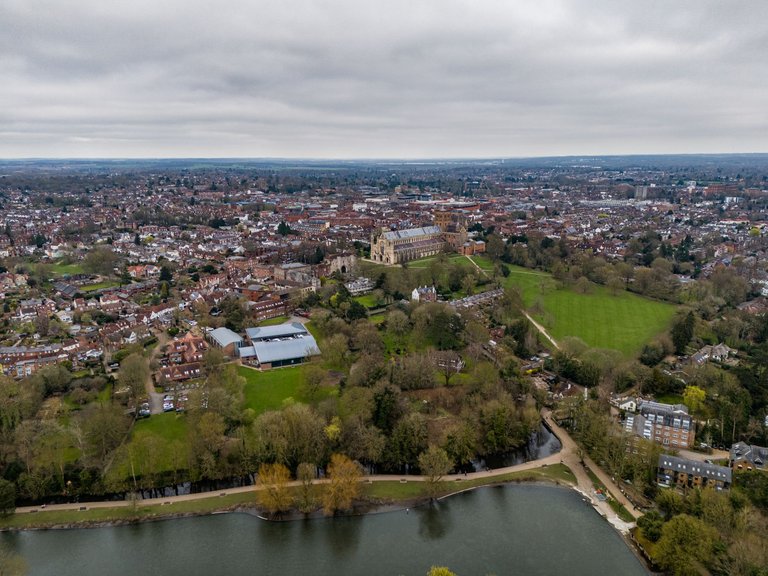
The city was walled on all sides. Today, the southeast to southwest sides of the city wall defences are well preserved, showing meticulously arranged layers of flint rocks and flat material.
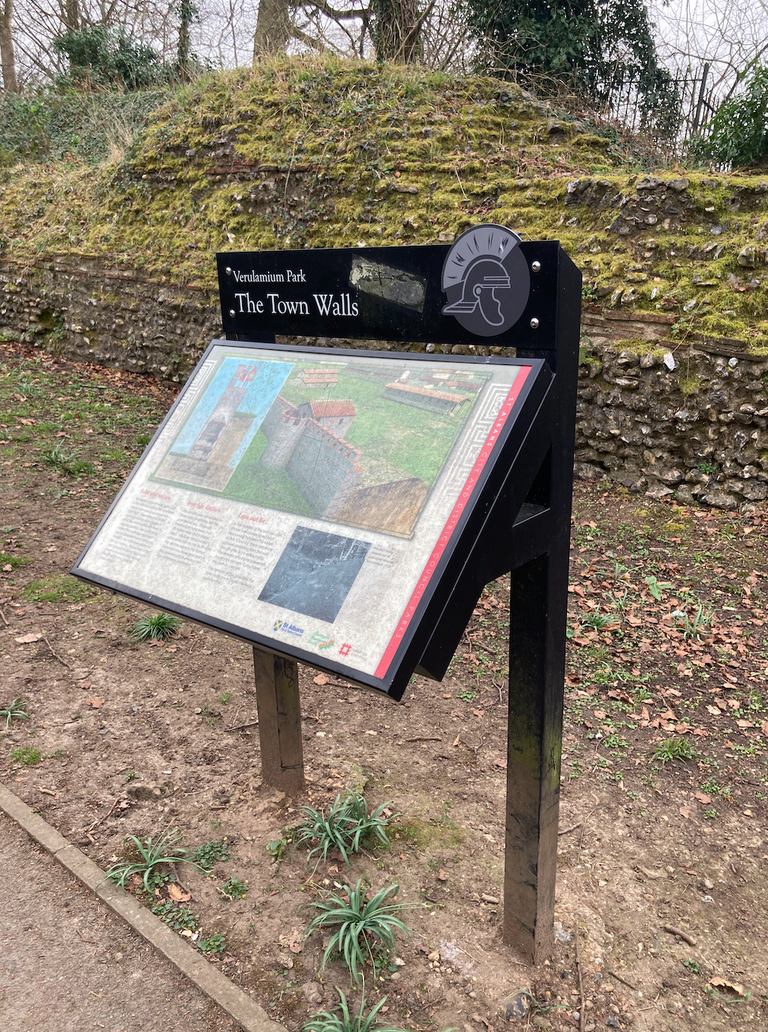

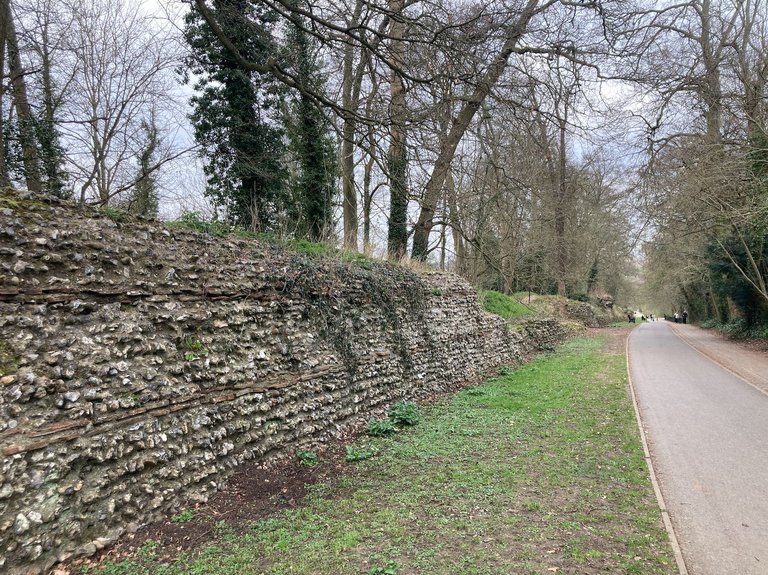
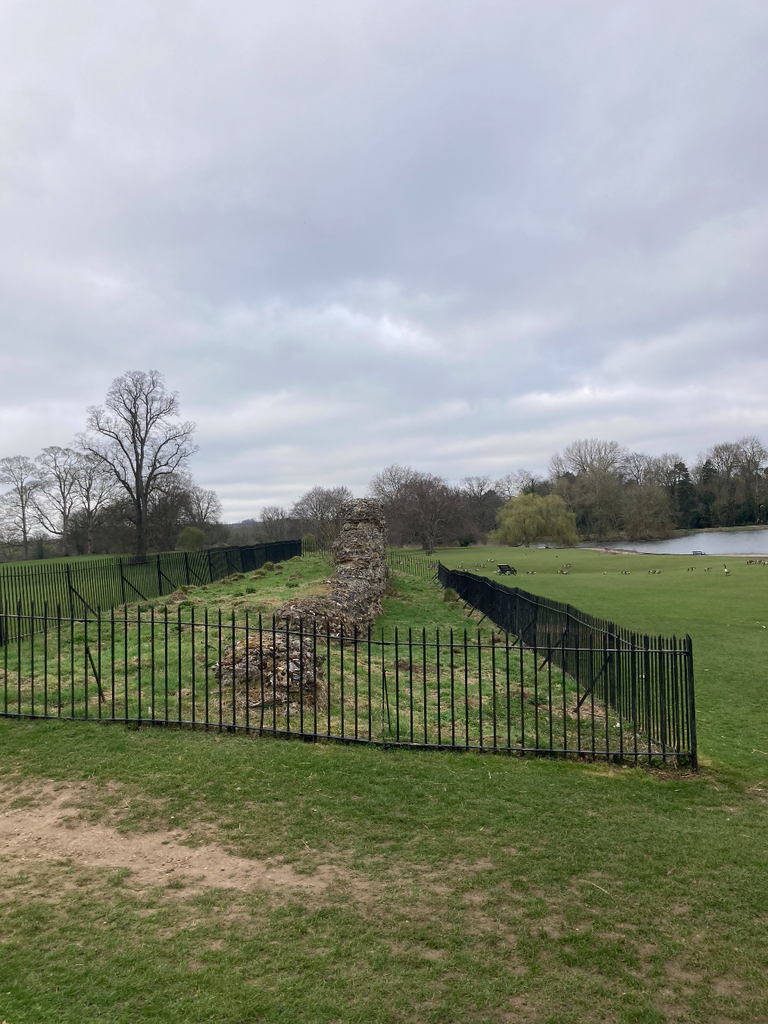
The city also had huge defensive earthworks (modern day ditches) known as 'Wheeler's Ditch' outside of the walls and it is believed that it was around 10m deep. Most of the ditches filled with water and were sandwiched by large mounds on the outside edge for further reinforcement, this was likely from the excavated material.
Seen to the right of the image below is the ditch and the wall on the left side.

Additionally, ditches of various depths have also been found running for almost a mile to the northeast along a road towards Wheathampstead, indicating that this small town was also of importance and the road needed protection.
When Romans invaded in 43AD, Verlamion was deemed of such importance that it gained the status of municipium (or city) and it was renamed to Verulamium. This status allowed its leading magistrates to become Roman citizens.
In 61AD, the significance of the city drew the attention of Boudica and the Iceni from the north and was subsequently destroyed in a rebellion- along with London and Colchester. The city was rebuilt and forum and basilica (court) were added in 81AD.
The theatre seen below is to the northwest of the area and was the first Roman theatre in Britainnia, built around 140AD.
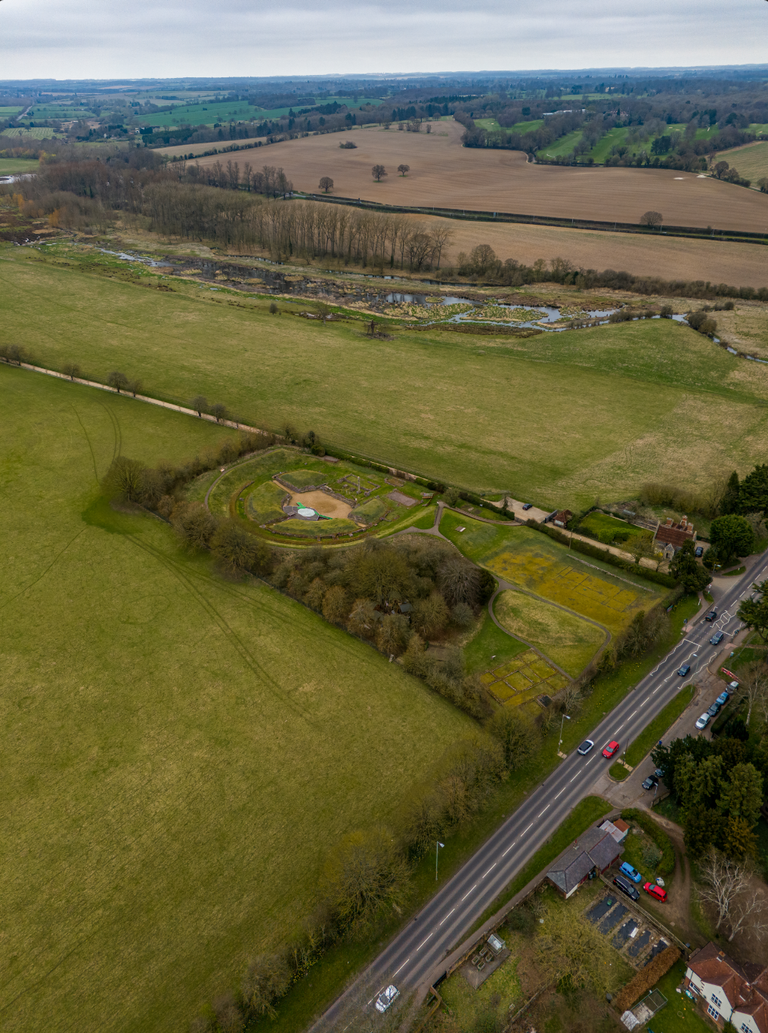

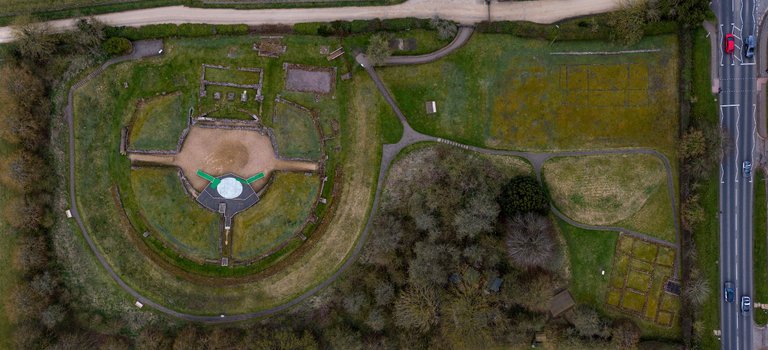
A huge gate once stood to the southeast of the city- the foundations of which are seen below and a road from here took travellers directly into Londinium.
Roman roads connecting cities were pretty much always straight so in the image below, I tried to show a perspective looking directly down Watling St in the middle distance, leading towards Elstree. It then becomes Stonegrove, which leads to Cricklewood and ultimately Hyde Park Corner & Buckingham Palace!
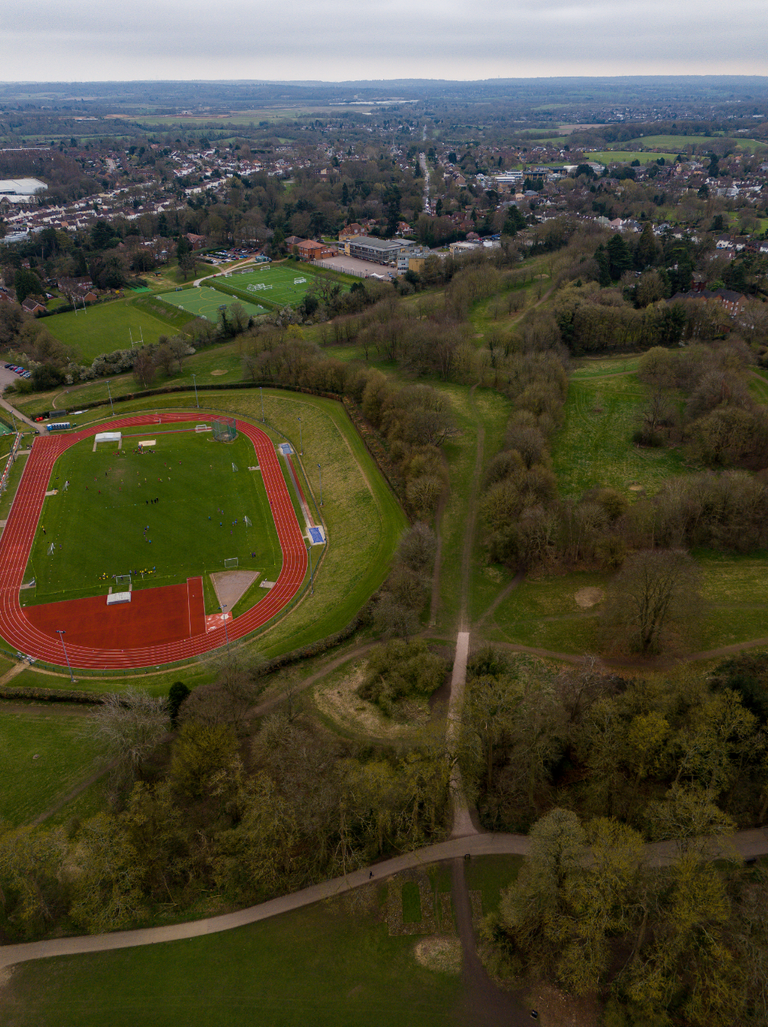
Old Watling Street also extends to the northwest of the city and leads to Milton Keynes and beyond.
The park is free and open to the public including an incredibly well preserved Hypocaust (a building with underfloor heating) and mosaic floor seen below.
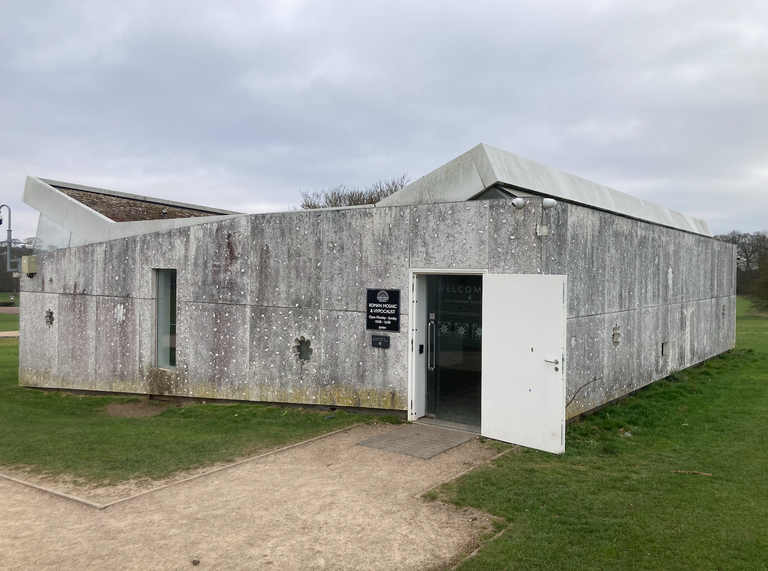
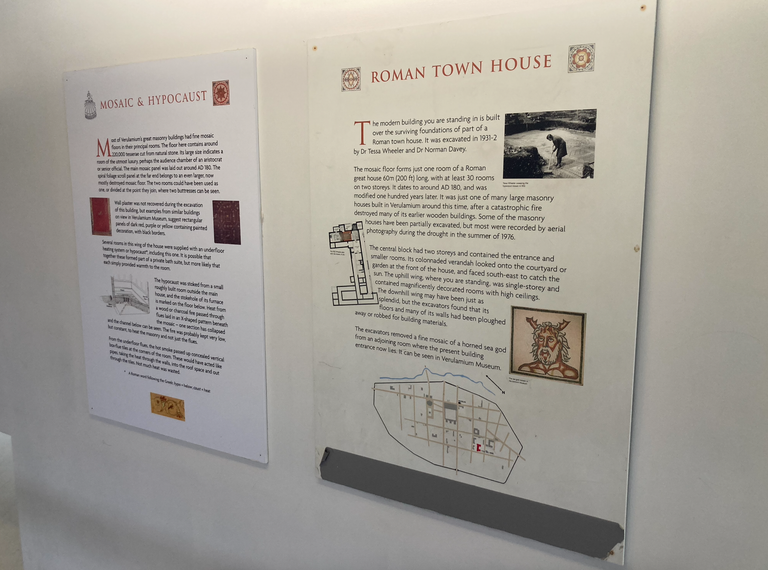

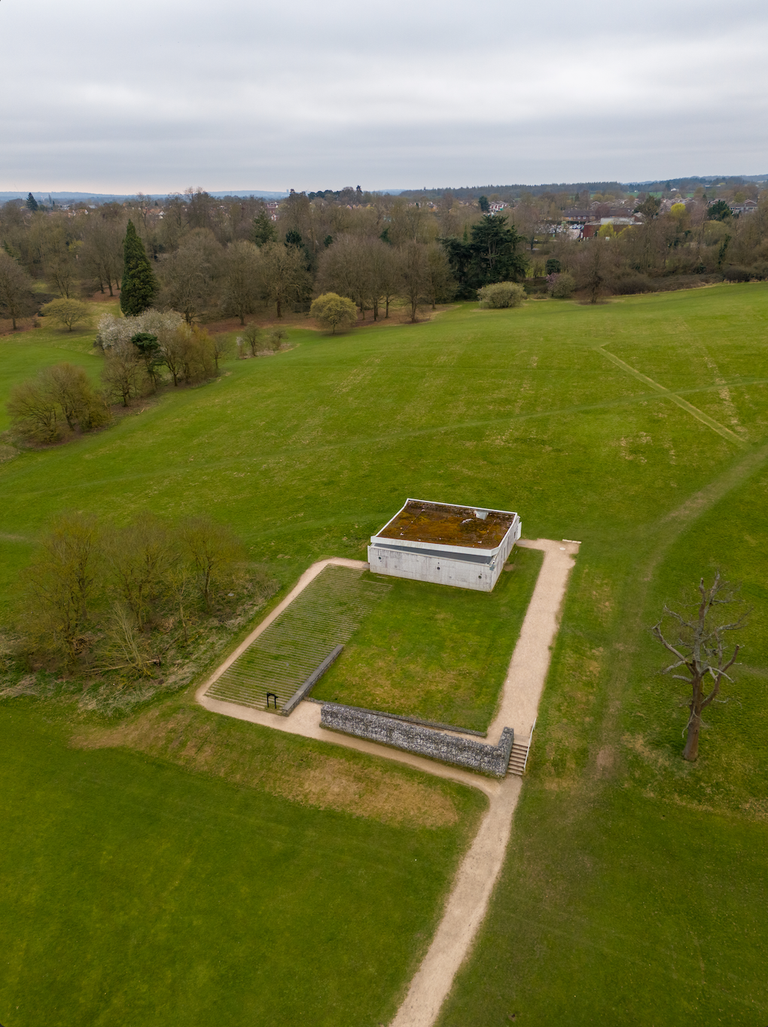

Britannic occupation by Roman garrisons ended in 410AD, leaving citizens to fend for themselves against Anglo Saxon invasions. It is believed that withdrawal was the result of the mainland empire being thrown into disarray following the deaths of a few emperors in quick succession.
The Waeclingas tribe of Anglo-Saxons took over Verulamium soon after the withdrawal and used the old city as a territory boundary. It was very important in the formation of the county of Hertfordshire.
St Michael's Church seen below is Saxon and was built on the site of the Roman basilica. More about this Christian quest will be featured in my next post.
Excavations in the late 90's preparing for construction of the modern visitor centre revealed numerous Roman artefacts.
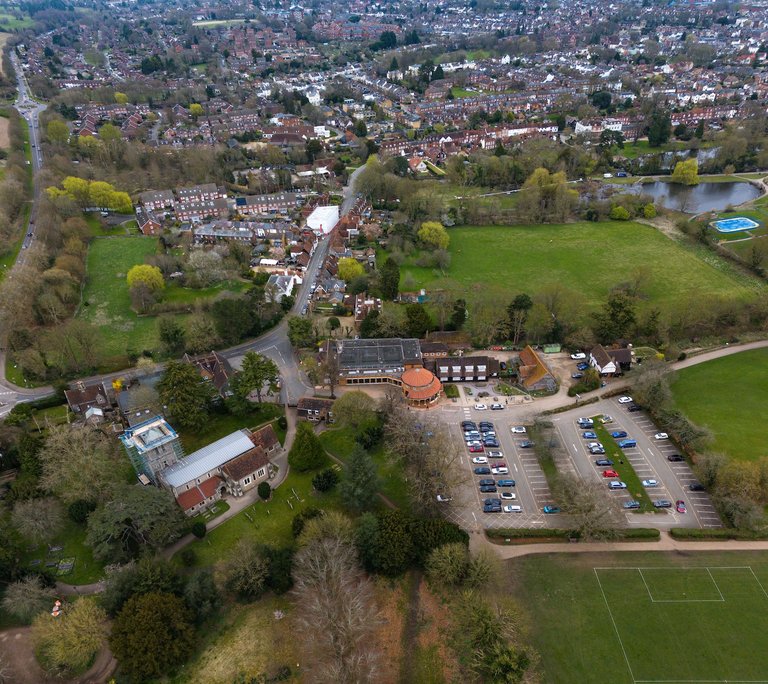
Modern day St Albans takes its name from the first British saint and experts believe he lived here around 3AD.
The Abbey of St Albans was founded by Ulsinus - leader of monks- in 793 and it was the principal medieval abbey in England. According to some, the first draft of Magna Carta was drawn up here.
In 1539, it was turned into a parish church during Henry VIII's dissolution of the monasteries to fund construction of coastal defences for use against the French and Spanish. It was expanded into a cathedral in 1877.
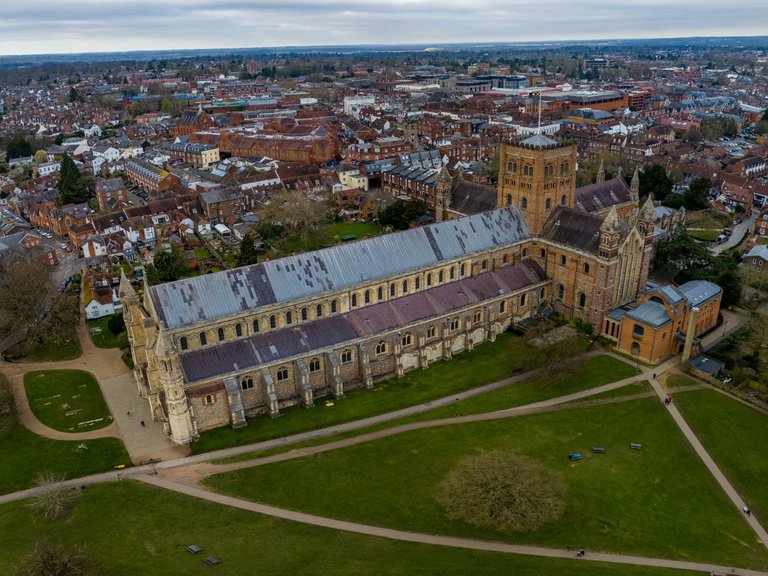
After Ulsinus was killed by a plague, The Great Gateway of the Monastery seen below, was built around 1360 by his successor. It has been a printers, a prison and is now part of a school (one of the oldest in the world founded in 1871) Professor Stephen Hawking was a student here!
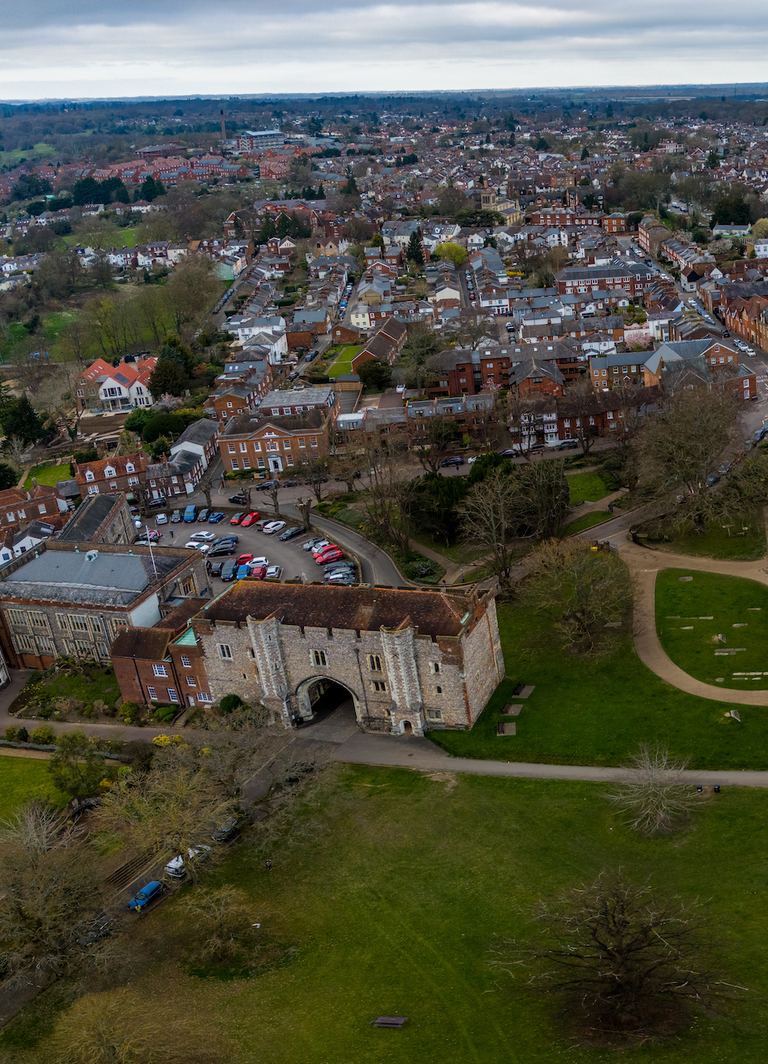
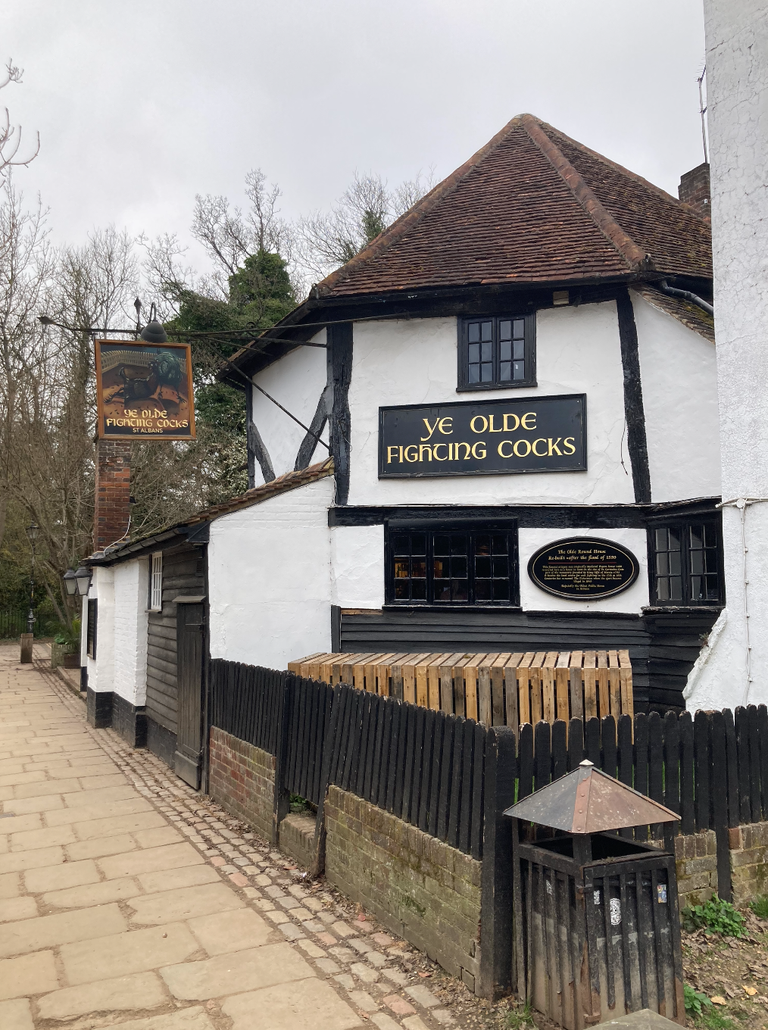
Ye Olde Fighting Cocks is a unique octagonal building with a central fireplace. I was drawn here because it was once known as the oldest pub in England (along with two others claiming to be). However, it was found to be impossible to verify so the title was removed.
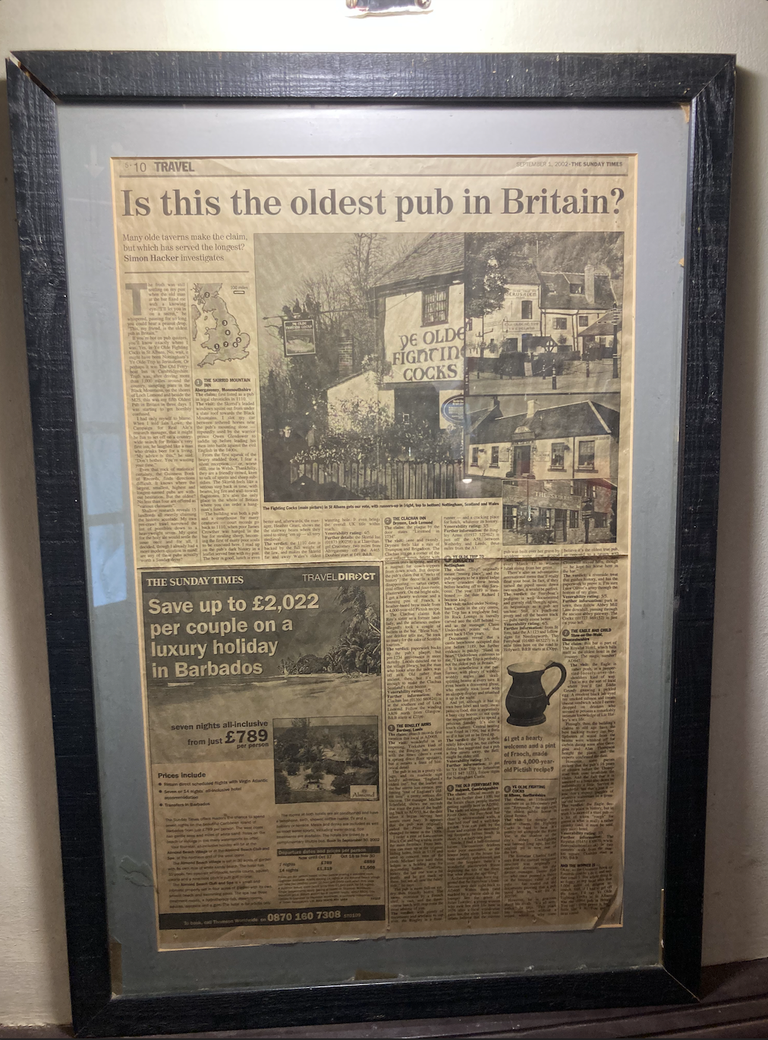
In 1756 it was originally a pigeon house that was turned into an alehouse named The Three Pigeons. When bird fighting became popular, the owners renamed it.

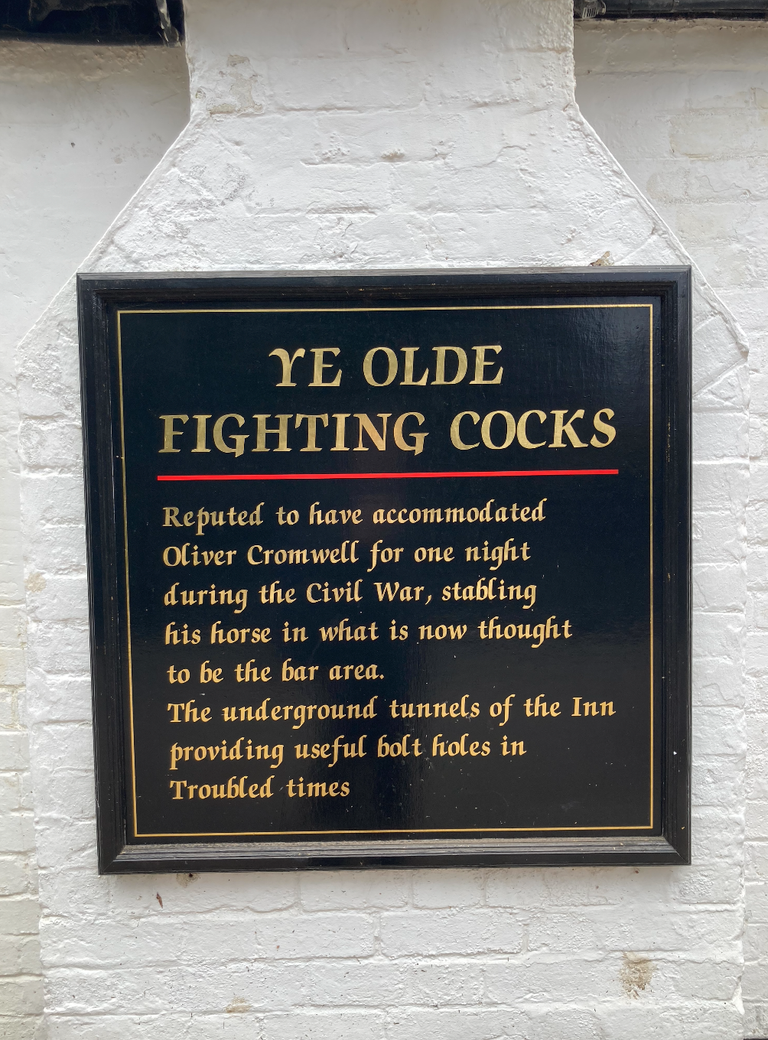

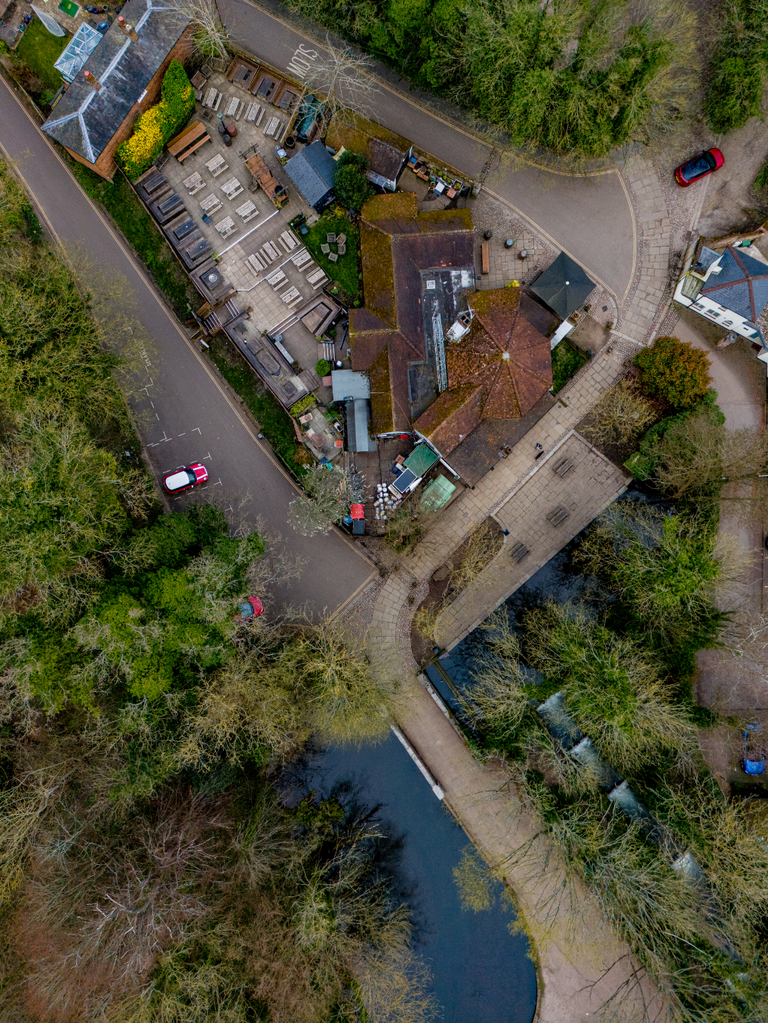
I hope you enjoyed a walk around this small part of the city as much as I did! There is so much to see and I highly recommend visiting.
Until the next time!
#amazingnature #architecture #archon #creativecoin #curation #OCD #GEMS #photos #proofofbrain #alive #cent #ctp #pimp
View on Ecency here:
https://ecency.com/@bombaycrypto
See my Travel Feed profile here:
https://travelfeed.com/@bombaycrypto/map
Don't forget to tell your friends and join our community!
@Ecency link:
https://ecency.com/created/hive-186141
You can check out this post and your own profile on the map. Be part of the Worldmappin Community and join our Discord Channel to get in touch with other travelers, ask questions or just be updated on our latest features.
Congratulations, your post has been added to the TravelFeed Map! 🎉🥳🌴
Did you know you have your own profile map?
And every post has their own map too!
Want to have your post on the map too?
- Go to TravelFeed Map
- Click the create pin button
- Drag the marker to where your post should be. Zoom in if needed or use the search bar (top right).
- Copy and paste the generated code in your post (any Hive frontend)
- Or login with Hive Keychain or Hivesigner and click "create post" to post to Hive directly from TravelFeed
- Congrats, your post is now on the map!
PS: You can import your previous Pinmapple posts to the TravelFeed map.Opt Out
Such a fascinating and detailed walk through the rich history of St Albans! Loved the blend of ancient ruins, Roman architecture, and modern charm. The visuals made the journey even more immersive. Thanks for sharing this treasure trove of historical insight
Thank you for your kind words! Yes there is some deep history here and I would like to visit other towns in the area with ties to the city!
You have managed to visit a very beautiful and peaceful place, it is truly amazing, have a nice day my friend.
Thank you for your comment, it was a great afternoon!
Travel Digest #2525.
Become part of our travel community:
- Join our Discord
Hiya, @lauramica here, just swinging by to let you know that this post made it into our Top 3 in Your post has been manually curated by the @worldmappin team. If you like what we're doing, please drop by to check out all the rest of today's great posts and consider supporting other authors like yourself and us so we can keep the project going!Congratulations @bombaycrypto! You received the biggest smile and some love from TravelFeed! Keep up the amazing blog. 😍 Your post was also chosen as top pick of the day and is now featured on the TravelFeed front page.
Thanks for using TravelFeed!
@for91days (TravelFeed team)
PS: Did you know that we have our own Hive frontend at TravelFeed.com? For your next travel post, log in to TravelFeed with Hive Keychain or Hivesigner and take advantage of our exclusive features for travel bloggers.
Marvelous tour
Thank you!
To You for sharing 🙏🏻
Hermoso sitio, c ok N mucho verde natural. Y las fotos magníficas
Gracias por compartir.😘🙏👏👏👏🇨🇺
¡Gracias! Sí, la zona se mantiene prácticamente intacta debido a su importancia arqueológica.
Que belleza de paisajes. Gracias
¡Gracias por tu comentario!
I love what this little city has to offer! Despite its past, it comes with plenty of interesting places to be visited by both a local and tourist!
There is so much going on. I appreciate that the park is open to so that everyone can visit and be immersed.
The view you shared is very nice my friend
Thank you very much!
This beautiful waterfall, this wonderful river, the beautiful trees, the nature and those houses of unspeakable joy create a truly great feeling of joy. A beautiful journey is always a great lesson in life. I would like to thank you very much for sharing the wonderful natural beauty of this city along with its wonderful architecture.
Thank you for sharing your thoughts, Yes, wandering around aimlessly taking it all in was eye opening. Reading up on the history after is fascinating.
Yes you are always welcome my pleasure